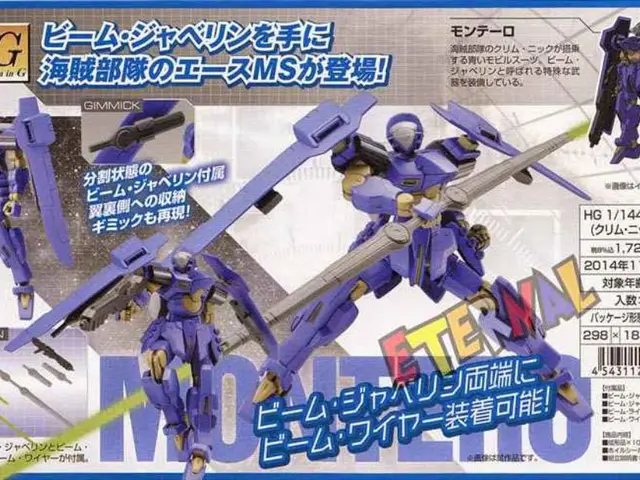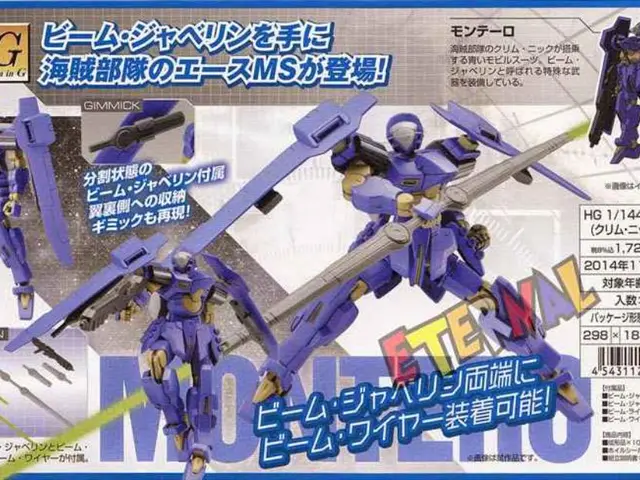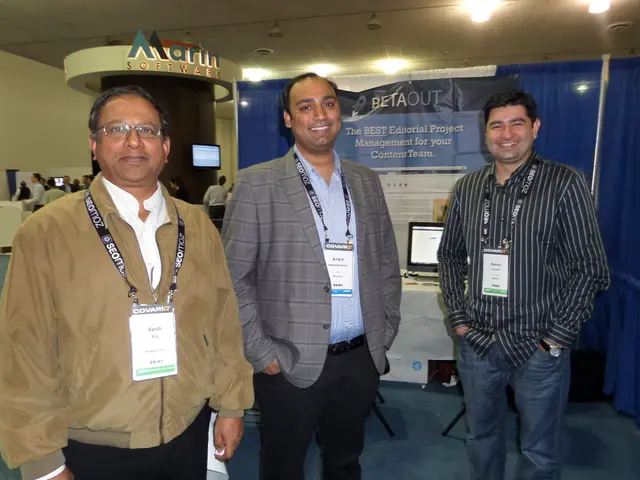Competitor Takes on Qualcomm in Second Day of Clash
On the second day of the oral testimony phase, additional professionals including Nuvia's founder Gerard Williams and other experts took the stand in the civil trial between Arm and Qualcomm. The trial shifted focus towards two main topics: licensing agreements and the technical intricacies of CPU cores, offering more clarity on the source of the contractual ambiguity and potential jury considerations for a verdict.
Among the proficient witnesses testifying were:
- Gerard Williams - former Nuvia CEO, now Senior VP of Engineering at Qualcomm
- Dr. Robert Colwell - previously of Intel and DARPA
- Shou-Wei (Mike) Chen - USC Professor of Electrical and Computer Engineering
- Jonathan Weiser - Qualcomm attorney
The License Agreements
Arm operates through two primary business models. The first involves selling IP blocks, including CPUs, to firms for use in chip designs through Technology License Agreements (TLAs). The second alternative is licensing the Arm instruction set architecture (ISA), allowing companies to construct custom CPU cores compatible with Arm, executed through Architecture License Agreements (ALAs). TLAs are far more prevalent and account for a significant majority of the thousands of Arm licenses. There are only a few entities with ALAs to develop custom, Arm-compatible CPU cores. According to Arm, this number ranges between 5 to 20 licensees, consisting of companies such as AMD, Ampere, Apple, Broadcom, Google, Intel, Marvell, Microsoft, Qualcomm, and Samsung. These ALAs licensees compete with Arm's most profitable venture of selling IP through TLAs.
The Nuvia ALA
Although Arm's licensing agreements share common features, each deal is customized according to the customer's requirements. Unfortunately, all agreements are classified as confidential and are, therefore, unavailable for public scrutiny. During the process, only fragments of the agreements were disclosed. However, the recent testimonies revealed some discussions regarding the Nuvia ALA at the heart of the dispute:
- Arm has the authority to approve the licensee's acquisition, which may be perceived as unreasonable due to restrictions imposed on the licensee.
- Should Nuvia be acquired, the agreement terminates, and the acquiring company must procure its own license or purchase existing licenses, namely multiple licenses since Nuvia used both a TLA and the Nuvia ALA to create a server processor. As a result, no need to terminate the Nuvia licenses since they were automatically extinguished upon Qualcomm's acquisition of Nuvia. However, Qualcomm already holds both TLA and ALA licenses from Arm.
- Termination of the agreement necessitates discontinuing the use and destruction of all materials related to an Arm-compliant processor.
- Sections were appended to the Nuvia ALA to distinguish Nuvia intellectual property (IP) and safeguard it. This resulted in confusion and ambiguity regarding the parties' (Arm and Nuvia) rights, exacerbating the disagreement.
- The contract mandates that Arm approve any transfer of the license. One part of the contract covers technology, whereas another covers Nuvia technology and its derivatives, which presumably include any transfer of CPU designs, though the term "designs" is not explicitly mentioned.
The Crux of the Issue
The aforementioned points have triggered a significant point of contention: is the Phoenix CPU core considered Nuvia IP or does it fall under the category of an Arm-compliant design? Arm argues that the Arm-compliant CPUs serve as derivatives of the Arm ISA, declaring the Phoenix CPU core as Arm-compliant. Qualcomm disputes this claim, stating that the microarchitecture, specifically the CPU design, is independent of the ISA. While Phoenix has served as the foundation for Qualcomm's latest generation of PC and flagship smartphone System-on-Chips (SoCs), codenamed Hamoa and Pakala, respectively, and the forthcoming automotive SoC, codenamed Nordschleife, these designs occur post-acquisition in July 2021 and represent unique, independent designs.
The central question for the jury will concern whether Qualcomm possesses the right to utilize the Nuvia technology under either the Nuvia ALA and/or Qualcomm ALA licenses.
The Supplemental Dispute
Qualcomm's allegations against Nuvia extend beyond this central dispute. The judge is currently hearing the jury regarding the application of recommendations proposed by Nuvia in the development of Arm's CMN-650 (codenamed Rhodes), CMN-700 (codenamed Kampos), and the next generation CMN (codenamed S3). CMN stands for coherent mesh network. The CMN-700 supports the Armv9 architecture, marking the first instance. This sidebar is presumably connected to the countersuit previously submitted by Qualcomm.
According to the testimony, NuVia was working with Arm on developing the CMN by offering input and conducting tests. As a leading partner, NuVia was given early access to the project. Based on the documentation, NuVia proposed numerous enhancements for the platform, but just the high to medium priority items were incorporated, resulting in less than half of the suggestions being included. It seems like around five or six suggestions made it into the CMN-700. Regrettably, the collaboration between the two companies was disrupted due to NuVia's acquisition by Qualcomm.
NuVia alleges that Arm misused NuVia-restricted data because all the suggestions were shared with Arm via confidential documents marked as such. Arm, however, argues that under their partnership agreement (TSA), they have the permission to utilize any partner's suggestions and that they are not considered confidential. Yet, the two companies had an NDA agreement from 2019, which supports NuVia's assertion that the information was confidential. The conflicting nature of the documents is making this dispute even more complicated.
Coming Up
The testimony regarding NuVia's accusation against Arm will conclude by early Wednesday.
In the primary lawsuit, Arm concluded its argument near the end of Tuesday, and Qualcomm began. On Wednesday, further testimony from Qualcomm's experts is anticipated, including Qualcomm CEO Cristiano Amon.
- The Nuvia ALA, a testament to the customization in Arm's licensing agreements, granted Nuvia the rights to develop custom CPU cores compatible with Arm's instruction set architecture (ISA).
- During the trial, it was revealed that the Nuvia ALA included sections to safeguard Nuvia's intellectual property (IP), leading to confusion about the parties' rights and exacerbating the dispute.
- Qualcomm's mobile processors, such as the ones powering their latest generation of smartphones, are based on the Phoenix CPU core, which is at the heart of the ongoing controversy between Qualcomm and Arm.
- In the process of acquiring Nuvia, Qualcomm already held both Technology License Agreements (TLAs) and Architecture License Agreements (ALAs) from Arm, removing the need to acquire Nuvia's licenses.
- On the stand, Gerard Williams, the former Nuvia CEO and now Senior VP of Engineering at Qualcomm, testified about the intricacies of CPU cores, shedding light on the technical complexities involved in the licensing agreements between Arm and Qualcomm.






